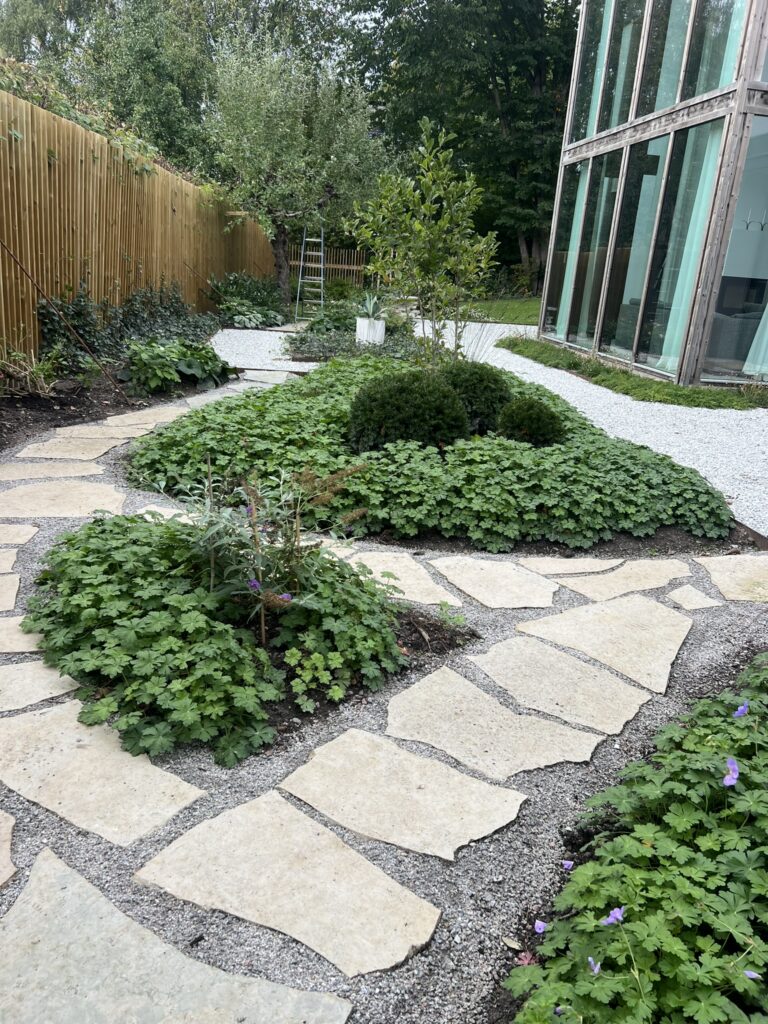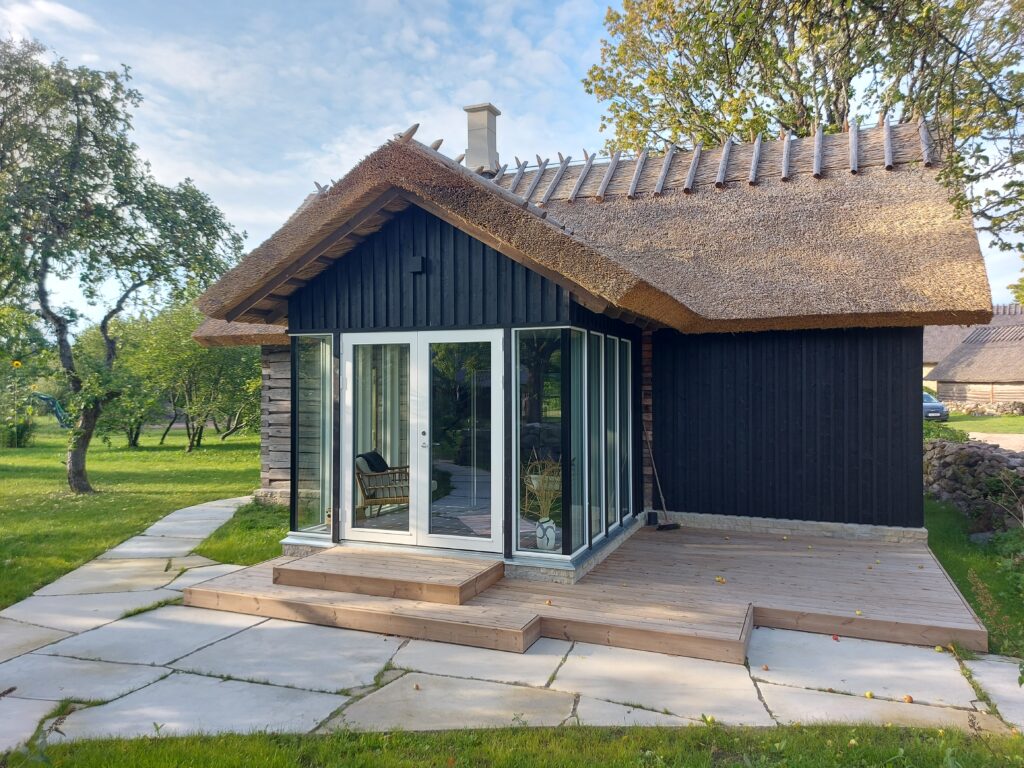The use of so-called irregular limestone slabs cut with the help of modern technology is becoming prominent in Nordic garden design and is increasingly preferred to the regular concrete panels due to the varied appearance of the slabs.
The dolomite slabs produced by Reval Stone remain durable on footpaths, as the stone is cut by using wires which are gentle on the material. The crumbling limestone slabs displeasing to the eye which can be seen in the public space here and there originate from the Soviet era when blasting created microscopic cracks in the stone.
The appearance of the irregular slabs depends on the location of the quarry, as well as the characteristics of the layer used for quarrying. Reval Stone is using dolomite from Kaarma, Orgita, and Selgase to produce the slabs in the factory in Saaremaa. ‘Each slab is unique, with its own peculiar natural lines and textures, which add character and rusticity to your outdoor areas and last long,’ said Janno Rauk, sales manager of Reval Stone.
The surface of the wire-cut slabs is slightly rough, which makes them look natural and ensures a good grip, making them ideal for outdoor use. ‘Dolomites are very resistant to cold and temperature fluctuations, and the easily processable slabs are good for cutting on-site. The slabs may have some natural cracks,’ stated Rauk.

Kaarma Dolomite
The thickness of the slabs starts from four centimetres, with each additional centimetre increasing the price by one tenth. Selgase dolomite is the most valuable, while the dolomites of Orgita and Kaarma also have great characteristics, but are somewhat cheaper.
Reval Stone: https://revalstone.com/shop/toode/vabakujulised-plaadid/
Text original Harju Elu: https://harjuelu.ee/vabakujuline-dolomiit-ouealadel/

